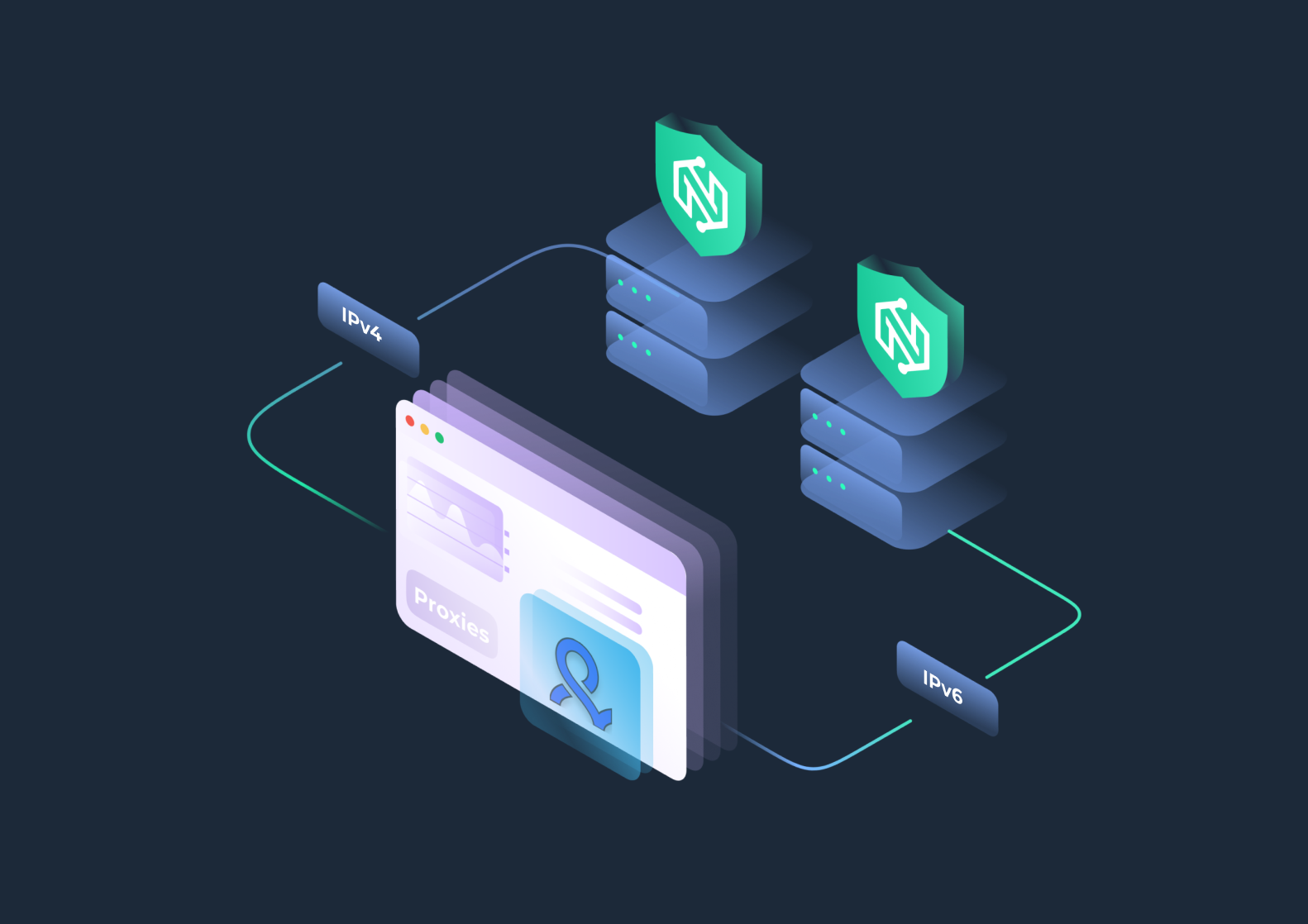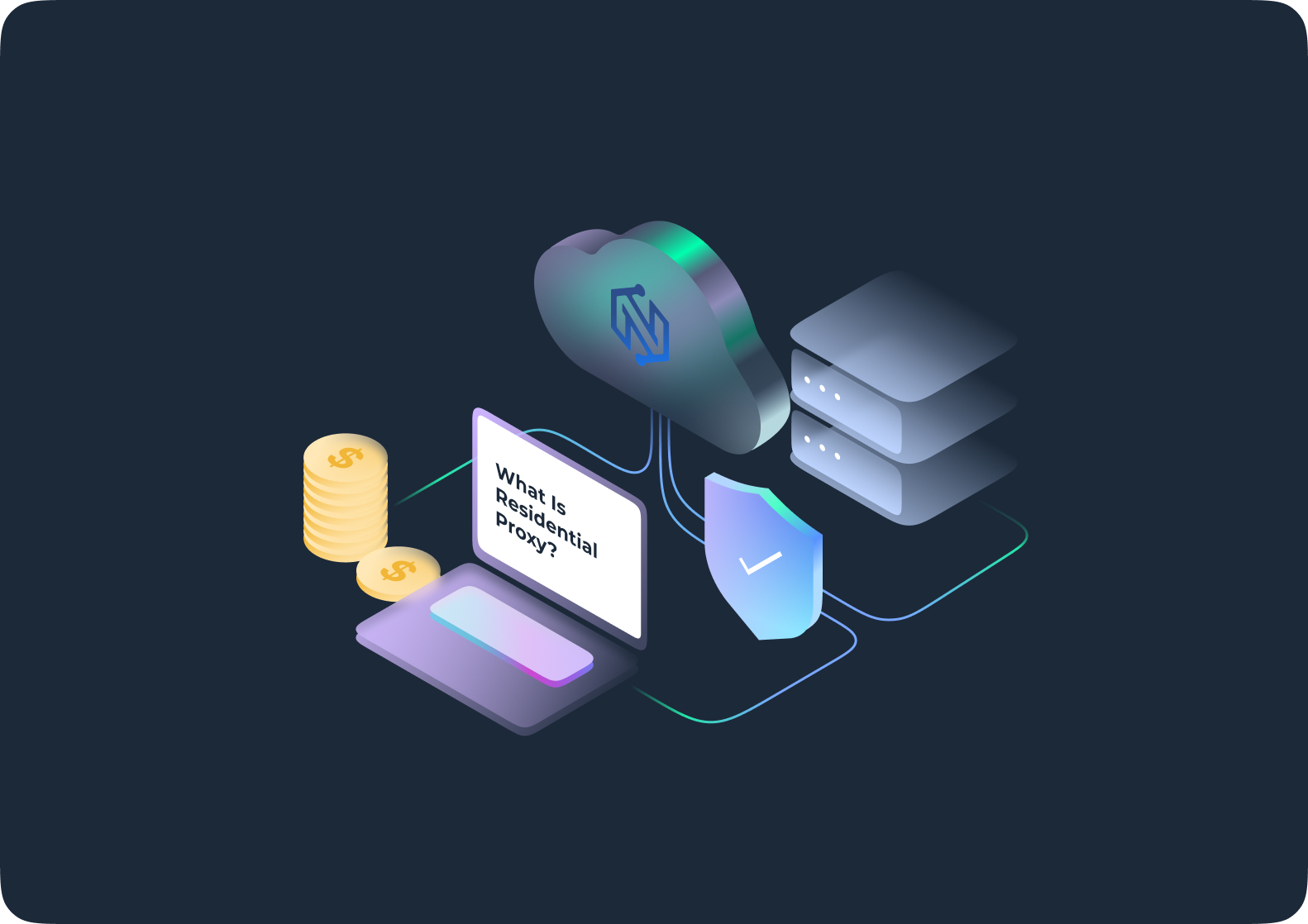Choosing the wrong proxy type can quietly wreck your campaigns. If you’re managing automations, running multiple accounts, or scraping at scale, the IPv4 vs IPv6 proxy debate isn’t just technical, it’s tactical.
Both protocols route traffic across the internet, but the differences between them impact everything from platform compatibility to ban rates and scalability.
In this guide, we’ll talk about:
- The core differences between IPv4 vs IPv6 proxies
- The real-world pros and cons of each for proxy use
- Which protocol works better for tasks like ad verification, botting, account farming, or geo-based scraping
By the end, you’ll know which proxy type gives you the edge, and where mixing them up could cost you.
What are IPv4 and IPv6 Proxies?
Here’s the backstory: The internet grew so fast that the original IP system ran out of room.
IPv4 (Internet Protocol Version 4) has been around since the early days of the Internet. It uses 32-bit addresses, which gives us about 4.3 billion unique IPs. Back in the 80s, that seemed like more than enough.
But the explosion of devices and users changed the game.
IPv6, launched to replace IPv4, uses 128-bit addresses, offering a jaw-dropping 340 undecillion IPs. It’s basically future-proof.
So why does this matter for proxies? Because each version behaves differently depending on the platform, the task, and your goals.
IPv4 Residential Proxies
IPv4 proxies are based on that older system. Because they’ve been around longer, most websites and apps were built to recognize and accept them.
- High compatibility: Works with 99% of platforms, such as Amazon, PayPal, Instagram, etc.
- Realistic footprint: Looks like real users, especially when tied to residential IPs.
- Scarcity = higher cost: Because we’re running out of IPv4 addresses, IPv4 proxies tend to be more expensive.
Great for account creation, payments, and legacy platforms.
IPv6 Residential Proxies
IPv6 proxies are newer, but not as widely supported. However, they come with some major perks.
- Cheap and scalable: Massive pool of available IPs = low cost per IP.
- Perfect for scraping: You get more IPs to rotate through and avoid bans.
- Still not universal: Some platforms don’t support IPv6 yet, so compatibility matters.
They shine in scale-heavy tasks like web scraping or traffic simulation.
IPv4 vs IPv6 proxy: Key Differences
So what actually sets IPv4 and IPv6 apart, besides their IP counts?
1. Type of Addresses
- IPv4 uses dotted decimal format (e.g.,
192.168.1.1). - IPv6 uses hexadecimal separated by colons (e.g.,
2001:0db8:85a3:0000:0000:8a2e:0370:7334).
Tip: IPv6 addresses look more complex, but automation tools handle them just fine.
2. Packet Size
IPv6 supports larger payloads, which can be useful in high-bandwidth tasks like video streaming or massive scraping operations.
3. Number of Header Fields
- IPv4 has 12 header fields.
- IPv6 has only 8, hence it’s simpler and more efficient.
4. Optional Fields
IPv6 does away with many of the optional fields found in IPv4. That reduces complexity, especially when managing traffic in scale-heavy setups.
5. Configuration
IPv4 requires manual configuration or DHCP. IPv6 offers stateless address auto-configuration (SLAAC), meaning devices configure themselves.
Example: In environments like data centers or automation farms, that’s a huge time-saver.
6. Security
IPv6 was designed with IPsec encryption built in. IPv4 can support encryption too, but it’s bolted on manually.
Still, in real-world proxy usage, your encryption depends more on your browser, app, or automation script than the protocol.
7. Compatibility
IPv4 wins hands down. Virtually every website, app, ISP, and device supports IPv4, because it’s been the default internet protocol for over 40 years. IPv6, while more modern and scalable, still suffers from partial adoption across the web.
If you’re dealing with old-school financial platforms or payment gateways, stick with IPv4.
IPv4 vs IPv6 Comparison Table
Here’s a little comparison table summarizing all the features and characteristics we have discussed above in the blog.
| Feature | IPv4 | IPv6 |
| Address Length | 32-bit (e.g., 192.168.1.1) | 128-bit (e.g., 2001:0db8:85a3::8a2e:0370:7334) |
| Total IPs Available | ~4.3 billion | ~340 undecillion |
| Header Complexity | More complex (12 fields) | Simpler (8 fields) |
| Configuration | Manual or DHCP | Automatic (SLAAC) and manual |
| Security | Optional (IPsec add-on) | Built-in IPsec support |
| NAT (Network Address Translation) | Required due to limited IP space | Not required — each device gets a unique IP |
| Speed & Efficiency | Stable but may require more hops due to NAT | Often more efficient routing due to direct addressing |
| Compatibility | Supported everywhere — universal standard | Limited support — not all websites or apps accept IPv6 |
| Cost (Proxy Market) | More expensive due to scarcity | More affordable, ideal for bulk usage |
| Best Use Cases | Login consistency, account management, financial platforms | Web scraping, traffic scaling, non-sensitive bulk tasks |
| Address Notation | Dotted decimal (e.g., 192.0.2.1) | Hexadecimal with colons (e.g., 2001:db8::1) |
| Adoption Rate (as of now) | ~100% support across all major systems | Growing but still not universal |
| Example Platforms That Prefer It | PayPal, Amazon, Instagram, Meta Ads | Google, YouTube, modern APIs with full IPv6 support |
Pros and Cons of IPv4 vs IPv6
Let’s break it down simply.
IPv4 Pros
- Universally supported
- Trusted by most sites
- Strong track record
IPv4 Cons
- Expensive
- Limited supply
- More likely to be recycled or reused (especially if from poor providers)
IPv6 Pros
- Huge pool = cheap and available
- Less competition per IP
- Fast and efficient for bulk tasks
IPv6 Cons
- Not compatible with all platforms
- Detection risk if used on unsupported sites
IPv4 vs IPv6: Which One to Use
It depends on what you’re doing. Choosing between IPv4 and IPv6 proxies can directly impact your success rate, cost-efficiency, and stability.
Here’s how to break it down based on what you’re actually trying to do.
IPv4 Proxies: Ideal Use Cases
If you’re targeting platforms that are picky about trust, reputation, and IP consistency, IPv4 is your safest bet.
These proxies are the standard for compatibility, especially when dealing with older platforms, payment gateways, or anything with strict anti-fraud systems.
IPv4 residential proxies are your go-to.
Examples:
- PayPal multi-accounting
- TikTok and Meta ad accounts
- Sneaker copping on legacy platforms
- Amazon buyer/seller accounts
- Stripe & financial automations
If your platform doesn’t support IPv6, don’t try to force it.
IPv6 Proxies: Ideal Use Cases
When scale and speed matter more than universal access, IPv6 proxies step in as the go-to solution.
They’re perfect for high-volume, low-risk operations where you need thousands of fresh IPs without burning your budget.
IPv6 proxies are unbeatable.
Examples:
- Scraping search engines
- Simulating ad clicks or visits
- Load testing
- Web data aggregation
Tip: Combine IPv6 proxies with fast-rotating sessions to avoid anti-bot filters.
What to Consider When Choosing Between the Two
Here’s what really matters:
- Platform compatibility: Always check if your target site supports IPv6.
- Trust level required: Use IPv4 for sensitive logins or transactions.
- Scale & budget: IPv6 is more affordable for big jobs.
- IP quality: Go with providers that screen their IP pools.
Why NodeMaven is the Best Choice for IPv4 and IPv6 Residential Proxies
Choosing the right proxy provider isn’t just about IP count, it’s about reliability, trust, and long-term scalability. Here’s why NodeMaven stands out for both IPv6 and IPv4 residential proxies:
- Clean, High-Quality Residential Proxies
- Proprietary IP Quality Filter screens out low-performing or flagged IPs
- Independently validated by industry tools like PixelScan and ProxyWay
- 24-Hour Sticky Sessions
- Maintain the same IP for long tasks like account creation, wallet management, or ecommerce operations
- Avoid detection, bans, and mid-session drops
- Dual IPv4 and IPv6 Access
- Use either or both depending on your platform or scale needs
- Easily switch between proxy types inside one dashboard: no added cost
- Traffic Roll-Over System
- Unused traffic rolls over to the next period, maximizing your spend
- Pay-as-you-go model means you’re only charged for what you use
- Precision Geo-Targeting
- Target by country, city, and even ISP level
- Perfect for local scraping, ad verification, or region-specific campaigns
- Built-in Anti-Detection Support
- Fully compatible with tools like Multilogin, GoLogin, Puppeteer, and Incogniton
- Includes session stickiness and browser fingerprint integration
- Top-Tier Customer Support
- Real humans on Telegram, Slack, Zoom, and WhatsApp
- Fast, technical answers with advice tailored to your workflow
- Combined Mobile and Residential Pools
- Switch between mobile proxies and residential IPs without separate plans
- Optimize trust scores for platforms like TikTok, Instagram, and OnlyFans
- Onboarding That Actually Helps
- Step-by-step proxy setup wizard personalized to your target platforms
- Ideal for newcomers and pros alike. Setup in minutes, not hours
Wrapping Up!
Choosing between IPv4 and IPv6 comes down to your platform, purpose, and scale.
If you’re handling accounts, financial tools, or trust-heavy workflows, go IPv4. If you’re scraping hard, running bulk automation, or simulating traffic, IPv6 saves you money and time.
But the real game-changer is choosing a provider that knows how digital hustlers operate.
With NodeMaven, you don’t just get proxies, you get a scalable edge in the arms race of online earning.


